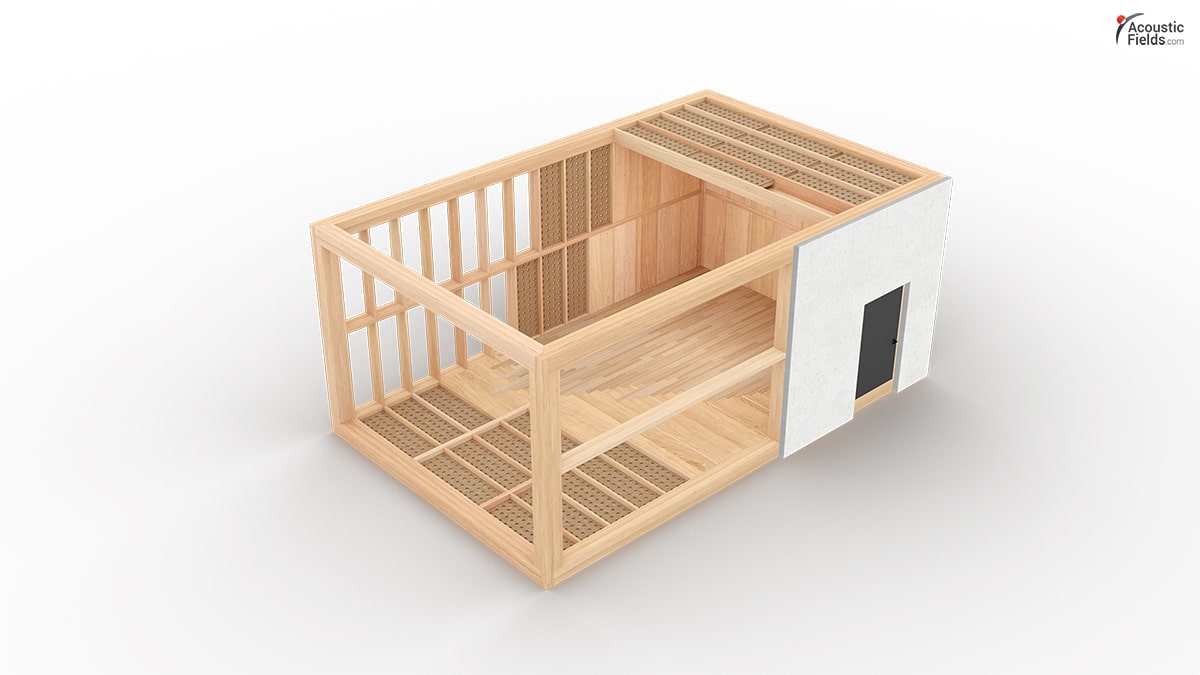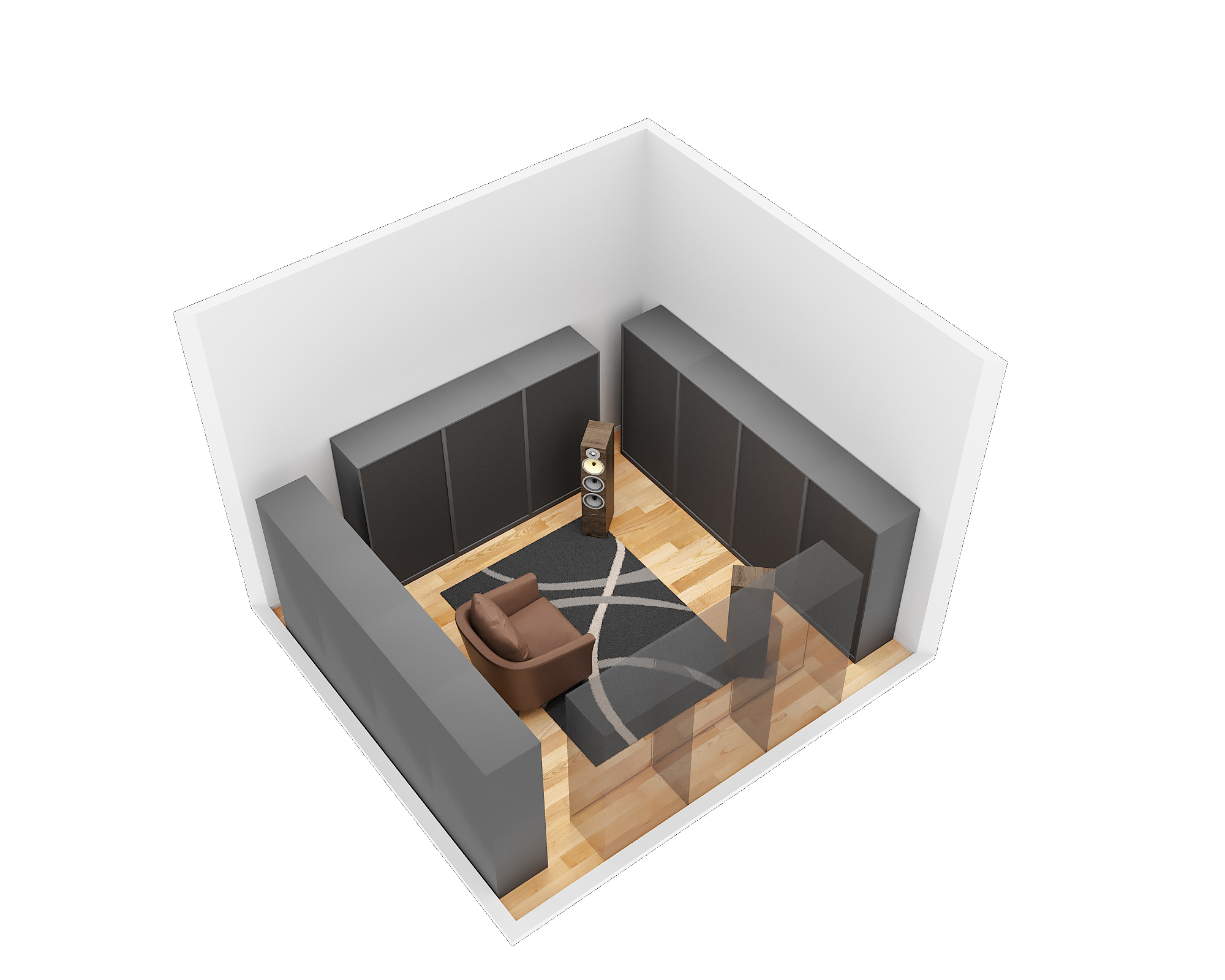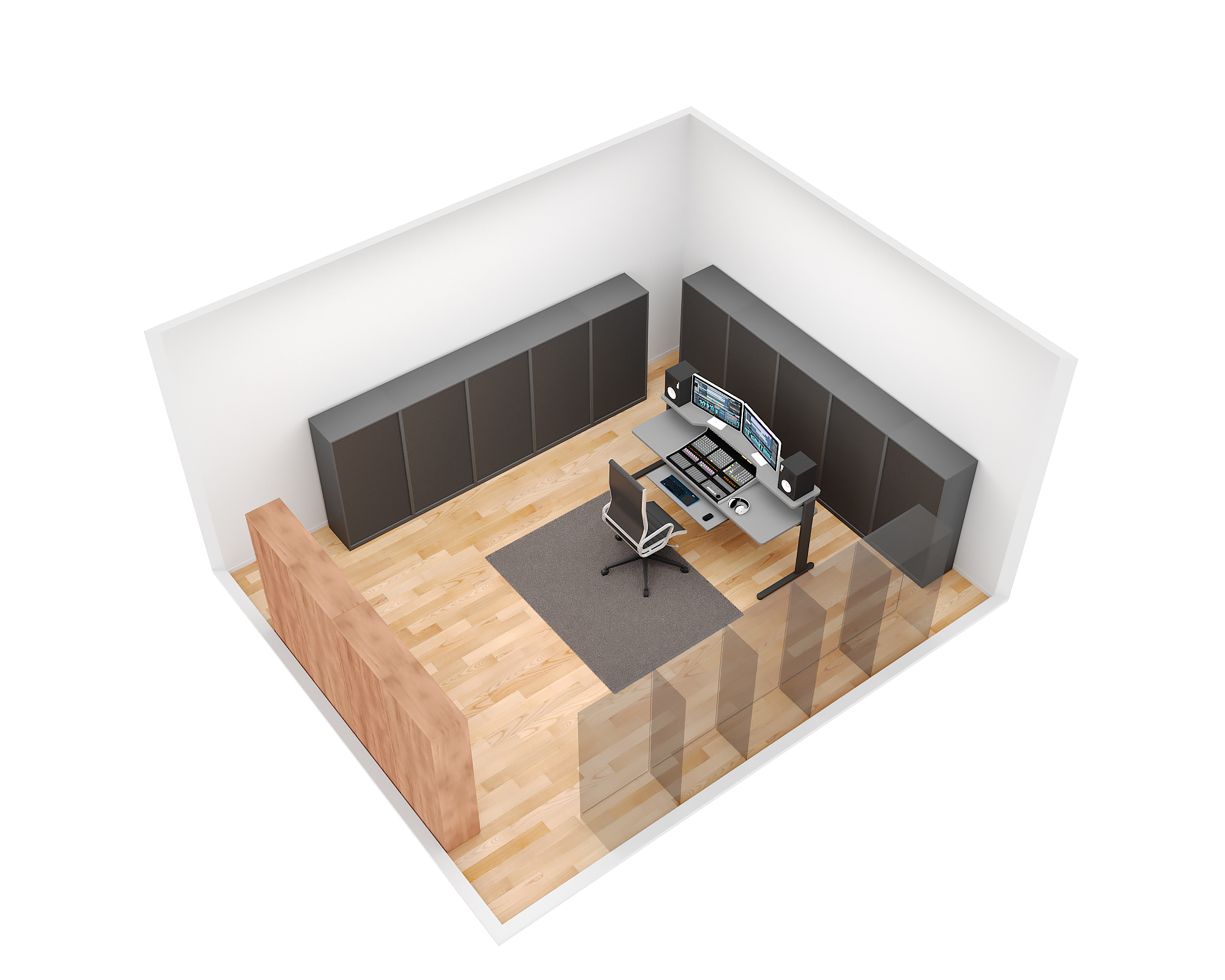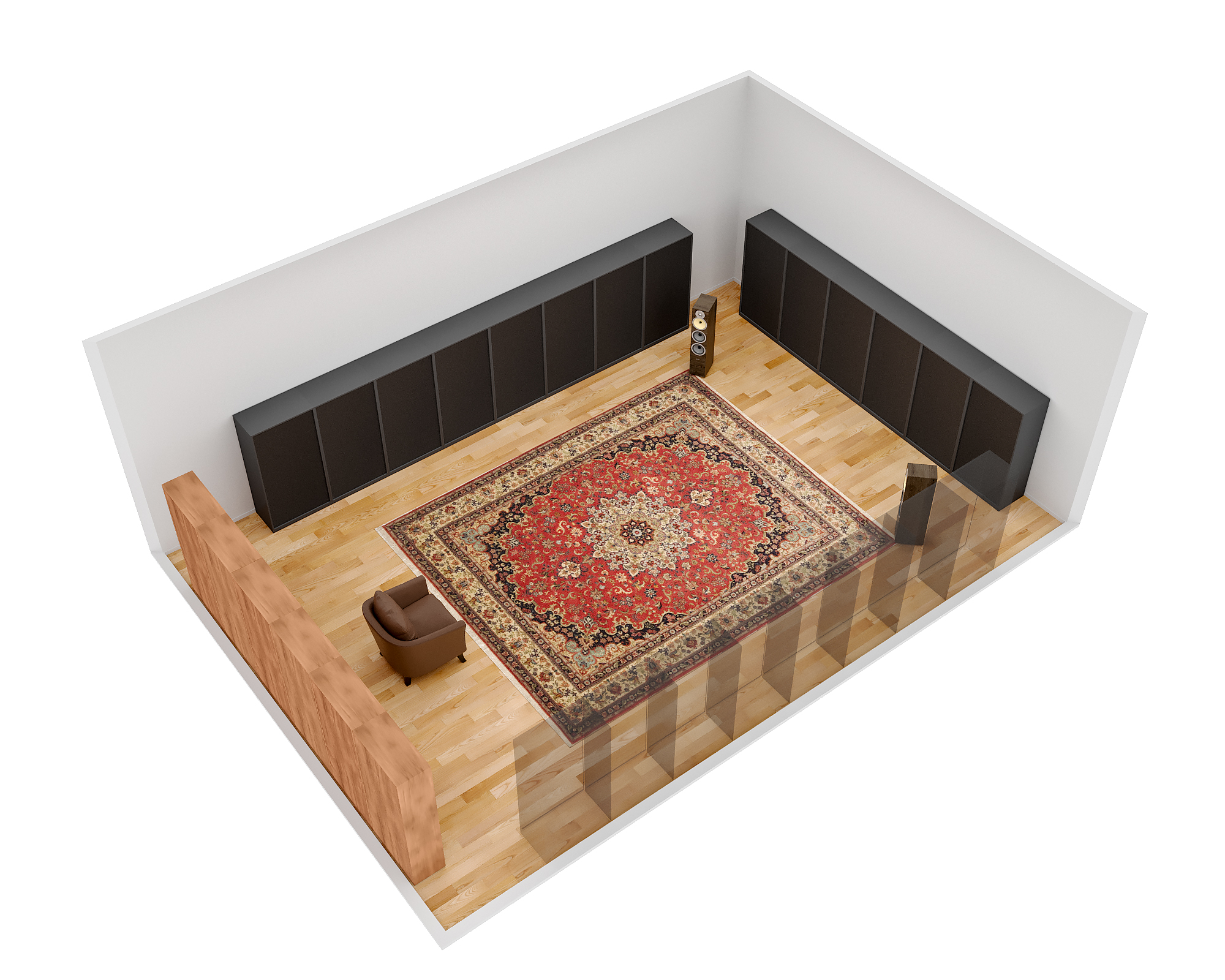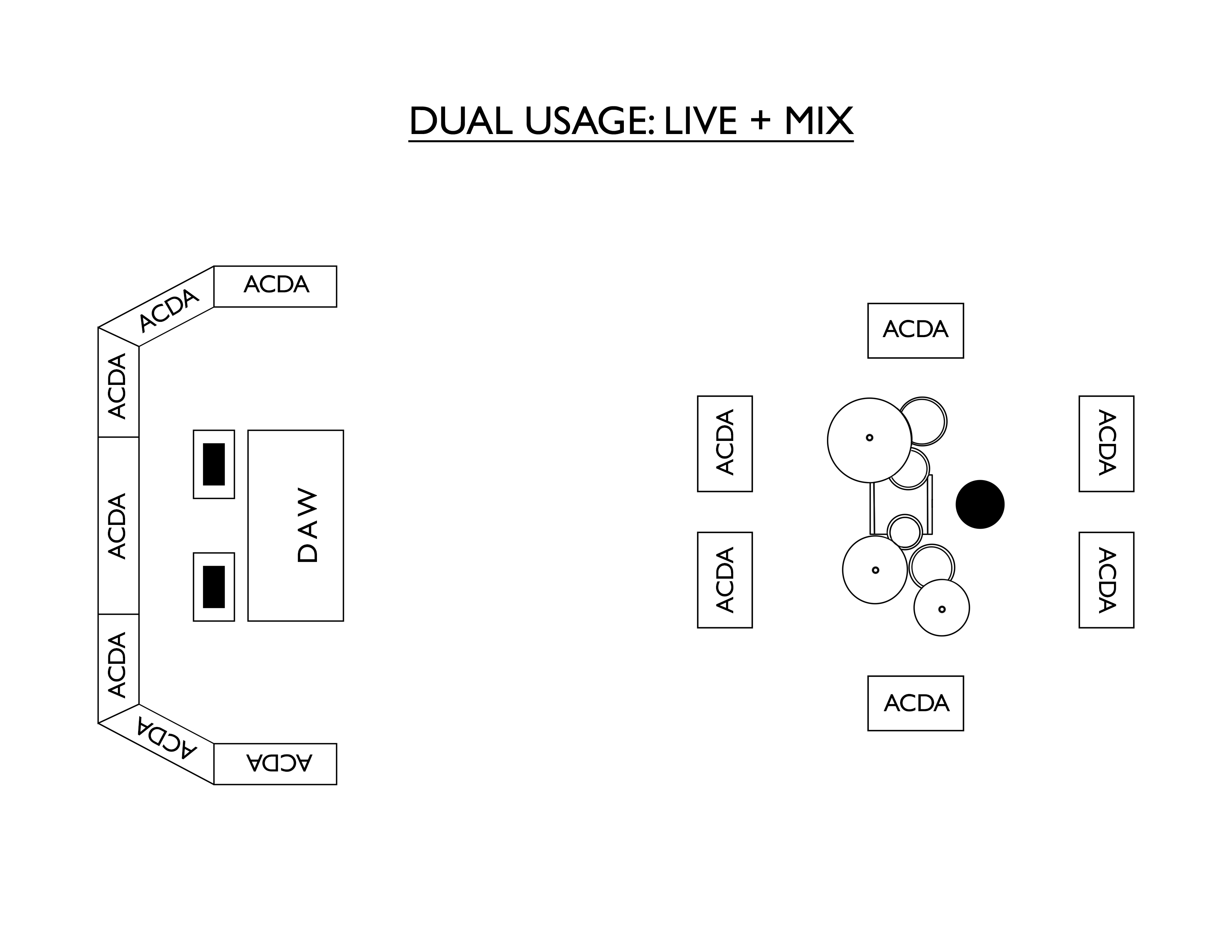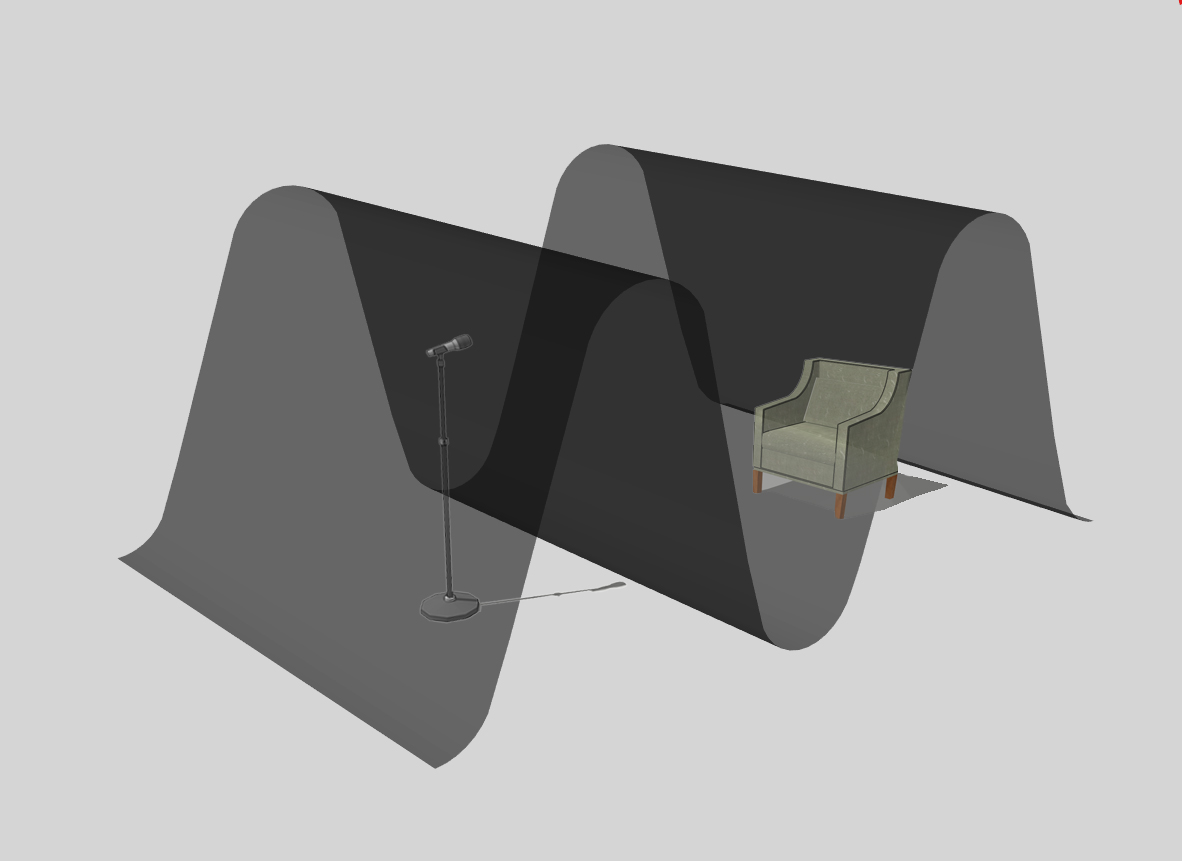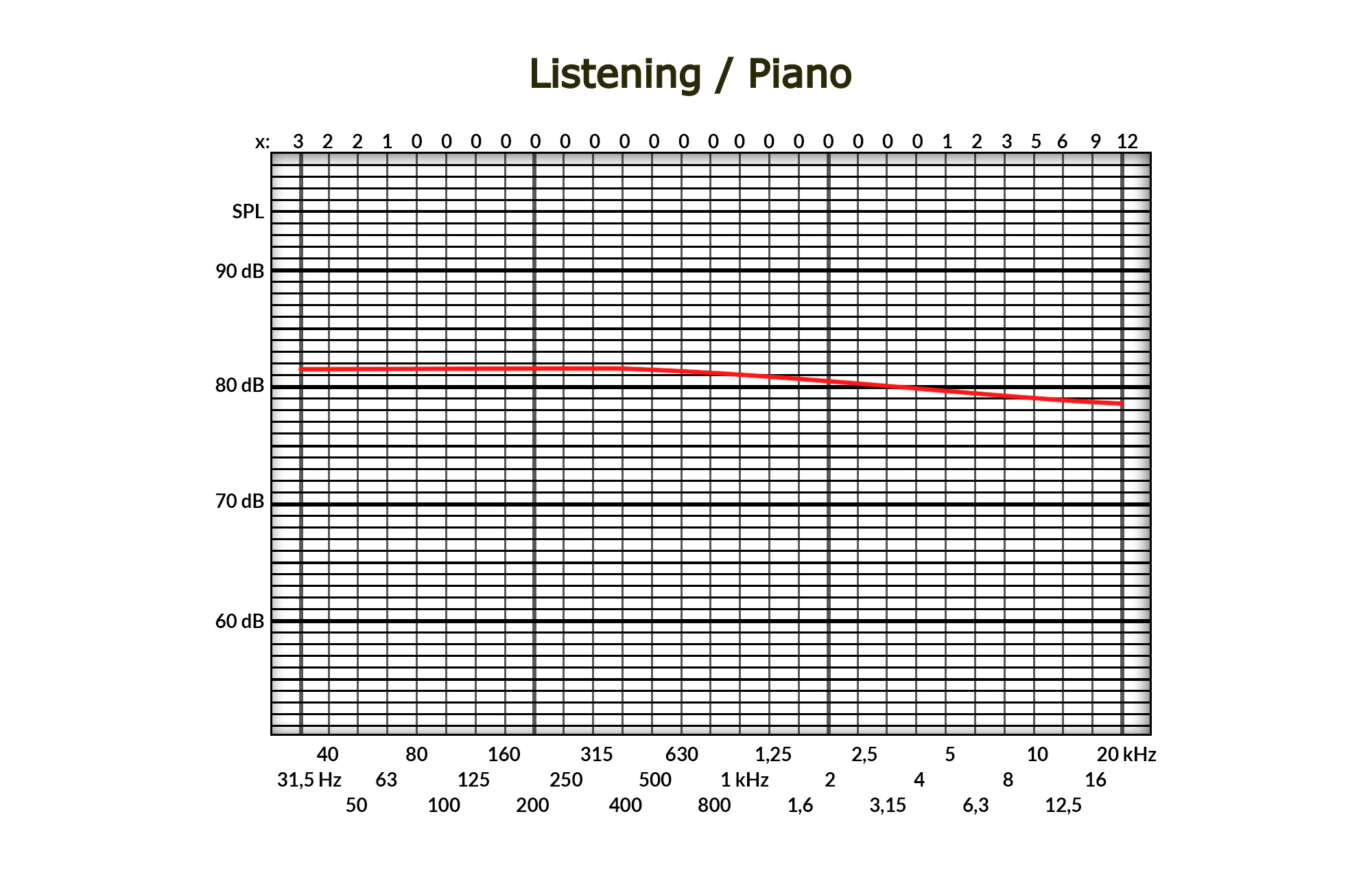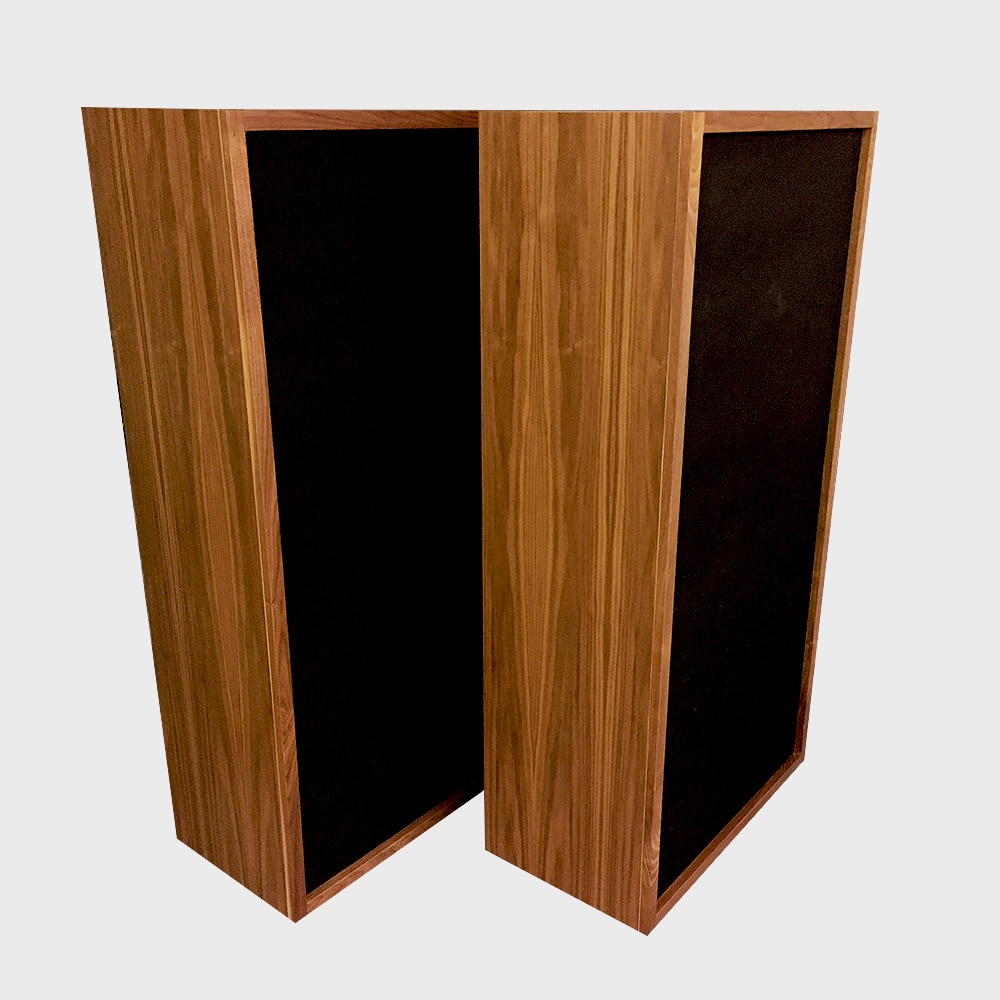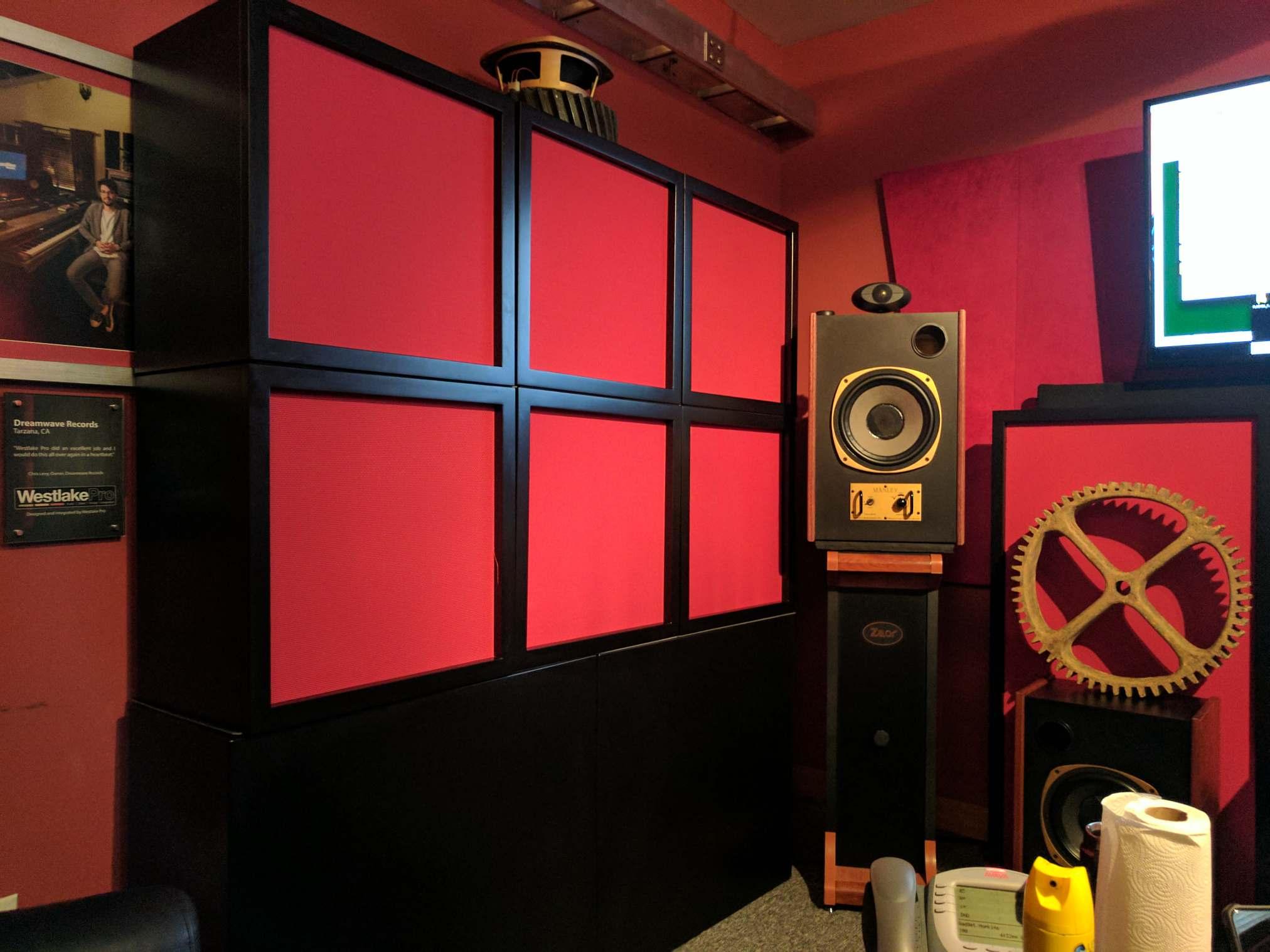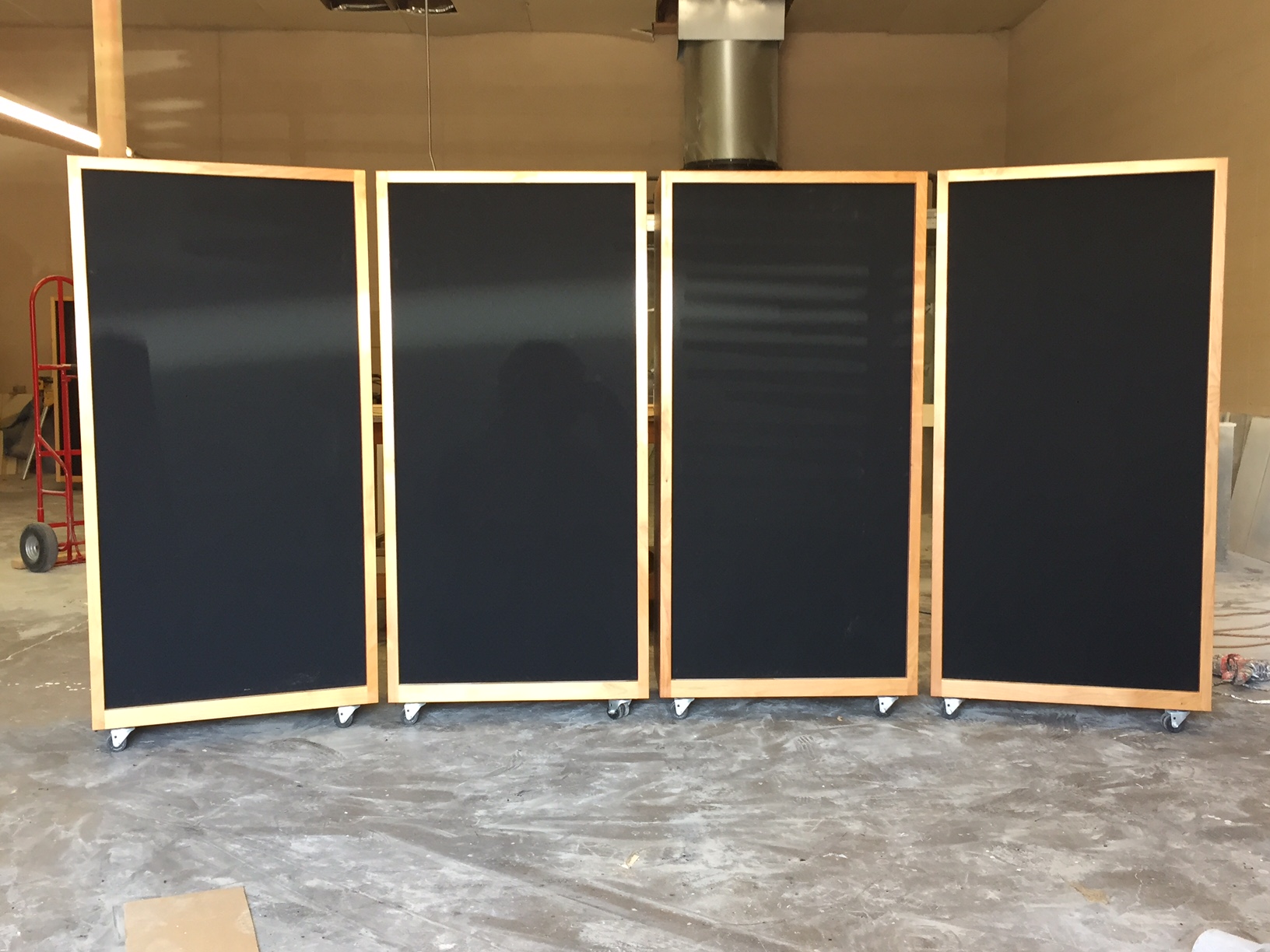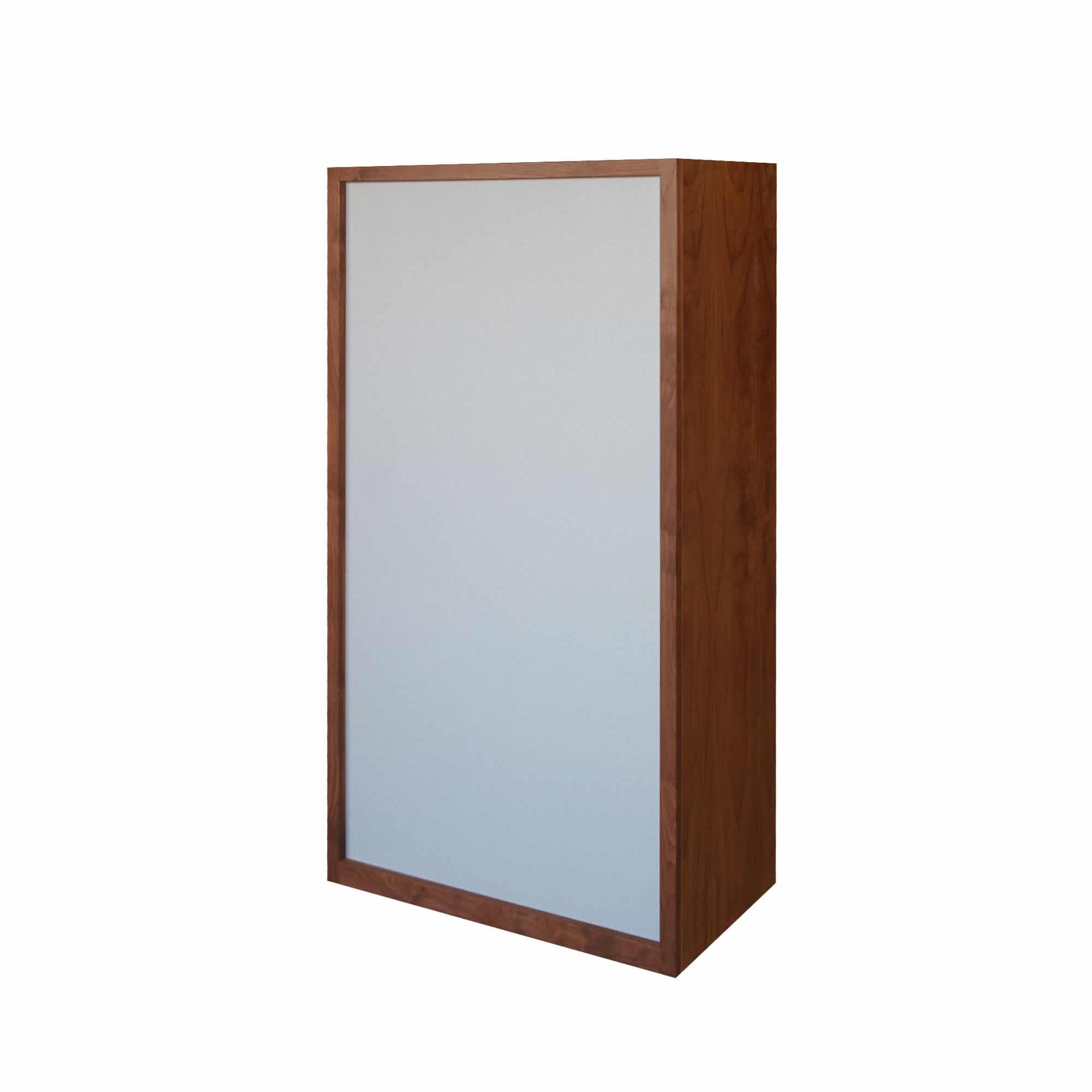There are three types of room modes or room distortion. There are axial modes which occur between two parallel wall surfaces. These can occur between the front and rear walls, between the side walls and also between the floor and ceiling. Their relative strength is determined by the distance between the two parallel surfaces and how much of the wavelength will not fit in that distance. Tangential modes are between four surface areas and oblique are between six surface areas which include the floor, ceiling, front and rear and both side walls. The axial modes are the strongest followed by the tangential.
MODES = DISTORTION
Room modes are room distortion. Amplifiers have distortion and speakers have distortion. Out of all the devices that produce distortion, the room is the worse offender. Axial modal issues below 100 Hz. produce large peaks in our room response curve. Large peaks are large amounts of distortion. This distortion is a fundamental distortion that carries through into the middle and high-frequency range harmonics. This is why we always say to treat the low-frequency energy issues within your room first. If you treat the low-frequency fundamentals, the middle and high-frequency issues will be easier to manage.
HELMHOLTZ, MEMBRANE, DIAPHRAGMATIC
Low-frequency management comes in three flavors. We have Helmholtz, membrane, and diaphragmatic. A Helmholtz resonator is an effective tool. However, they are difficult to build and are also frequency specific. Since they are narrow band, you need numerous units. The membrane technology is the cousin to diaphragmatic. It operates in a similar manner but lacks the “horsepower” to deal with a 30 – 50 Hz. issue within your room and all small rooms have this issue. You could fill a room full of membrane absorbers and never have enough attenuation to deal with the issues within your room.
DIAPHRAGMATIC
Diaphragmatic absorption is the most powerful of the three passive low-frequency absorption technologies available today. It is a cabinet with a “diaphragm”. The diaphragm is the first surface area that the low-frequency energy wave strikes. The diaphragm moves in response to sound pressure waves from low-frequency energy within your room. The low-frequency wave energy is slowed down by the diaphragm and then it enters the inside of the cabinet where it meets a perforated absorber full of carbon. We have 50 lbs of activated carbon inside each perforated absorber within our ACDA series.
INSIDE THE CABINET
The perforated absorber inside the diaphragmatic cabinet creates a space where atmospheric pressure is lowered below the initial pressure generated by the original wave energy. There is an atmospheric pressure change inside the cabinet. This pressure difference inside and outside the cabinet causes parts of the wave to collapse. We like to describe this process as cutting off the head and tail of the snake or wave. Some of the wave energy is absorbed and, some is reflected back into the room. We get more absorption than we do reflection and pass through energy.
HORSEPOWER
We achieve a 1.5 dB attenuation for every 12 square feet of our ACDA technology. It is the most powerful low-frequency absorption ever created. If you have a 10 – 15 dB low-frequency peak in your room response curve below 100 Hz. you must take action to reduce it down towards the baseline or flat response axis and all small rooms have this peak below 100 Hz. Only diaphragmatic absorption can treat this large distortion issue in the smallest amount of space. If you have a 12 dB peak at 30 – 50 Hz., take 12 dB and divide it by 1.5 dB to produce 8 of our ACDA units. This formula will hold true for listening or playing room pressure issues below 85 dB SPL. Room pressure levels above 85 dB SPL will require more units.
COVERAGE
To treat this room distortion, you must first locate the wall surface areas that are causing your unwanted room resonances. Every front and rear wall, every sidewall to sidewall, and every floor to ceiling boundary surface area, produces distortions below 300 Hz. You must locate the frequency of concern, locate the two wall surface area that is causing the resonant frequency and then apply the appropriate type, amount, and position of the prescribed treatment. Forget about this putting treatment in the corners. It’s a bandaid. Why would you put treatment in the corners when the whole surface area is producing the problem.

